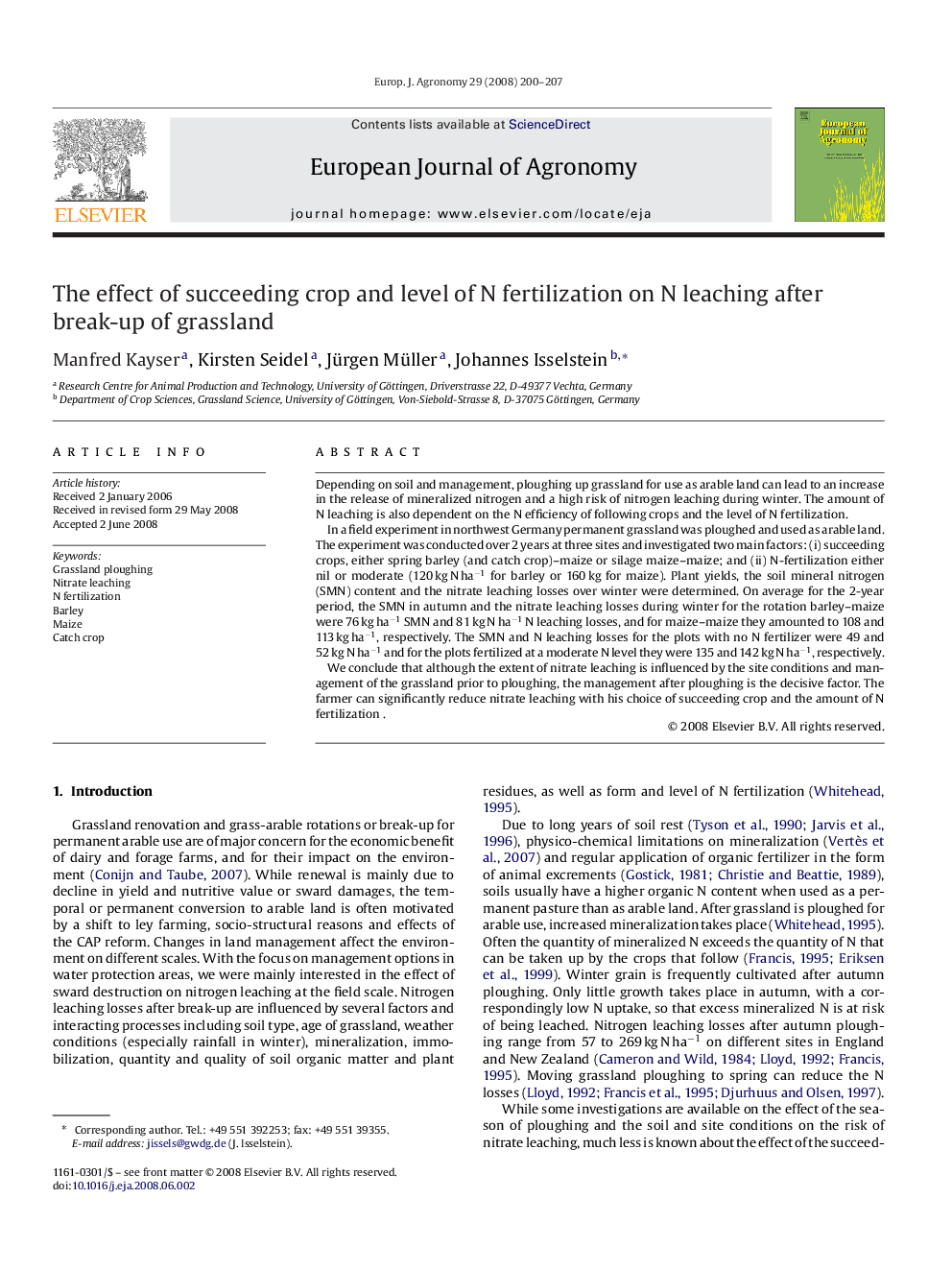| Article ID | Journal | Published Year | Pages | File Type |
|---|---|---|---|---|
| 4509533 | European Journal of Agronomy | 2008 | 8 Pages |
Depending on soil and management, ploughing up grassland for use as arable land can lead to an increase in the release of mineralized nitrogen and a high risk of nitrogen leaching during winter. The amount of N leaching is also dependent on the N efficiency of following crops and the level of N fertilization.In a field experiment in northwest Germany permanent grassland was ploughed and used as arable land. The experiment was conducted over 2 years at three sites and investigated two main factors: (i) succeeding crops, either spring barley (and catch crop)–maize or silage maize–maize; and (ii) N-fertilization either nil or moderate (120 kg N ha−1 for barley or 160 kg for maize). Plant yields, the soil mineral nitrogen (SMN) content and the nitrate leaching losses over winter were determined. On average for the 2-year period, the SMN in autumn and the nitrate leaching losses during winter for the rotation barley–maize were 76 kg ha−1 SMN and 81 kg N ha−1 N leaching losses, and for maize–maize they amounted to 108 and 113 kg ha−1, respectively. The SMN and N leaching losses for the plots with no N fertilizer were 49 and 52 kg N ha−1 and for the plots fertilized at a moderate N level they were 135 and 142 kg N ha−1, respectively.We conclude that although the extent of nitrate leaching is influenced by the site conditions and management of the grassland prior to ploughing, the management after ploughing is the decisive factor. The farmer can significantly reduce nitrate leaching with his choice of succeeding crop and the amount of N fertilization.
